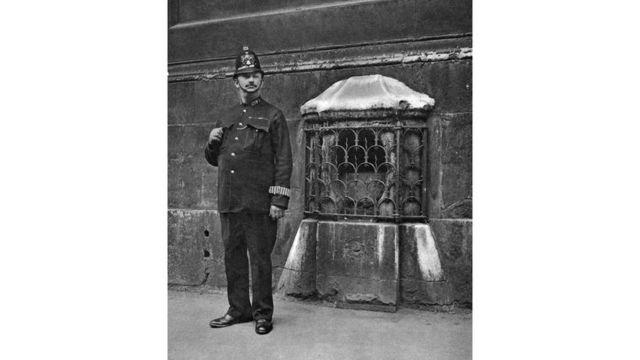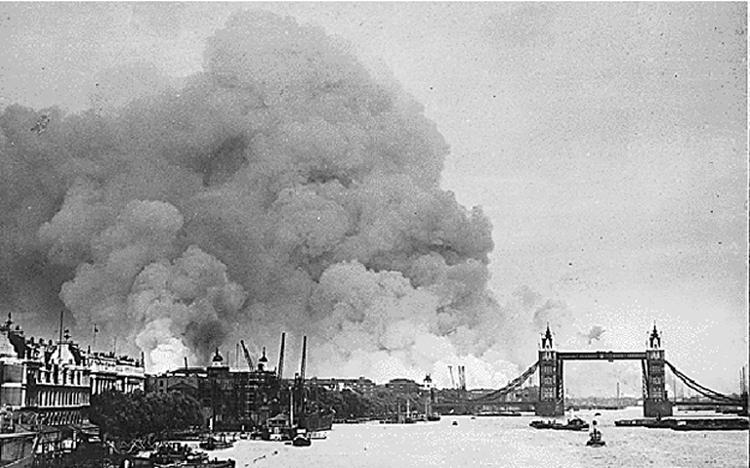It is difficult to imagine that a fragment of stone can become a landmark of a whole city, but it’s true for London. London Stone is many centuries old, but historians and archaeologists still puzzle over its origin and placing. Learn more at london-future.
Cannon Street is always full of people every day, especially in the morning hours, because it is almost central. People hurry through the street minding their own business and do not even notice the glass crypt built into the wall of house No. 111. If you look inside, you can see a fragment of ordinary stone without any inscriptions, jewels inlays, etc. It doesn’t even look like an ancient museum artifact. However, Londoners consider it a part of the city.
Historical facts

Famous writers of the 18th century suggested that London would exist as long as the Stone would remain in its place as the Trojans believed that the statue of Athena would save Troy. Roy Stevenson, head of the Historical Department at the Museum of London, says that the Stone lies in the same place permanently when everything around is constantly changing. The origin of this moderately sized Stone, only 53x43x30 cm, is still unknown.
The Stone was even examined in the 60s. Research has shown that it is probably limestone from the area near the small town of Clipsham. Scientists also assume that that fragment was extracted from a rock of the Jurassic age, which is located in the southwest of England.
The Museum of London Archaeology conducted its own examination in 2016 too. It showed that the Stone can probably come from the Cotswolds, which is located 160 kilometers to the west of London.
The interesting fact is that London Stone was also found on ancient maps. The oldest 16th-century printed map of the city has a mark for London Stone.
Scientists also say that the visible part of the Stone is just a tip of a huge block, which for some reason was embedded in the ground. In addition, the Stone is only a few minutes walk from the Tower of London.
Another famous historian of the 16th century, John Stow, also mentioned the Stone in his works in 1598. He wrote that it sits so firmly in the ground that if a wheel runs over it, the Stone will remain intact, but the wheel will break. The fact that the Stone was embedded in the middle of the way seemed strange to the historian too. However, taking into account the changes in the city topography, it can be assumed that the streets and the way were built around the Stone earlier. Unfortunately, this is all the information about the Stone that can be confirmed for today.
A witness to the Great Fire of London

The Stone has always been a prominent landmark of London, but it also witnessed famous historical city-changing events. In particular, the Stone witnessed the Great Fire of London in 1666.
According to historical documents, Thomas Farriner didn’t extinguish the stove fire completely, going back home on the evening of September 1, 1666. While the whole city slept peacefully, sparks ignited the firewood near the stove and the fire spread through the whole house very quickly. Farriner and his family managed to escape by jumping out of the second-floor window, but one of his maids died. On the morning of September 2, the fire spread to neighboring houses on that street. Thomas Bloodworth, the mayor of London at the time, rejected the firemen’s offer to destroy the houses near the epicentre of the fire, so it began to engulf the streets of the city rapidly. In a few hours, the fire reached the warehouse with candles, alcohol and coal and it exploded, causing the fire to cover the city even faster. Londoners started to build earth ramparts to stop engulfing fire, but it didn’t help. It was so strong that it could be seen 50 kilometers away. The fire was extinguished only on September 6. In total, 13,200 houses, 90 churches and many other buildings were destroyed in almost 4 days. Over 100,000 Londoners became homeless.
Located in the middle of the street, The Stone escaped significant damage, but during the reconstruction of the city, a rather interesting discovery was made.
During the post-reconstruction of the city, it was found that the small iceberg of London Stone was only the tip and the whole block was hidden underground almost 3 meters deep. Robert Hooke noted that London Stone may have been a kind of obelisk in ancient times. That theory was supported by the famous architect Christopher Wren. He assumed that it was a stone, which was the starting point of all the roads, as in Rome, where the length of the road was measured starting from such a stone.
Historical events
Over time, scientists developed a theory that London Stone was a part of the Ancient Rome building, but it was refused due to lack of evidence. In the mid-19th century, the Stone was moved because of underground construction, which resulted in the loss of a significant part of the Stone foundation.
In 1742, it was moved again because the traffic on the city streets increased and the Stone located right in the middle of the paved road became quite dangerous for drivers. Thus, it was placed closer to the kerb near the St. Swithin’s Church. In 1940, the Stone suffered some destruction again during the London Blitz, when London was massively bombed by Germans.
In 1962, a new office building was constructed on the site of the destroyed church. London Stone was taken into account during the construction and a special crypt in the wall was left for it. The Stone remained in the same place permanently, except for the period from 2016 to 2018, when the building was being renovated and the Stone was kept in the Museum of London.
Of course, it is difficult to tell what are facts and what are legends about the Stone, especially when myths and urban legends about it appear every minute.
Myths and legends

The most popular legend about the Stone dates back to 1450 when the so-called armed rebellion against Henry VI took place. He was not very popular among the people for a good reason. His policy of maintaining control over France was considered the main cause of the economic crisis in England. According to the legend, the leader of the rebels, the famous Jack Cade, laid his weapon on London Stone and called himself Lord of London. The second part of Shakespeare’s Henry VI chronicle, which had a grand effect on the audience, was based on that story. There is no further record of anyone besides the head of the rebels who used London Stone the same way.
Although the Stone didn’t affect the monarchy, it was strangely present in other interesting stories.
For example, in 1629, the Worshipful Company of Spectacle Makers, which was supposed to monitor the quality of spectacles and their manufacturers, was founded. By the way, this company exists till nowadays. Spectacles that didn’t meet quality standards were broken on London Stone with an instructive purpose and manufacturers were punished.
It is also believed that London Stone was a meeting spot and a sign for travelers that they had finally reached London.
Londoners joke that they wouldn’t dare to move the Stone from its place because who knows, maybe the future of London depends on it.